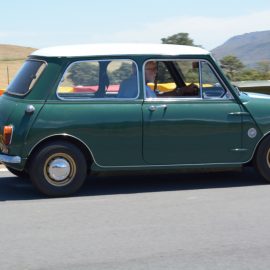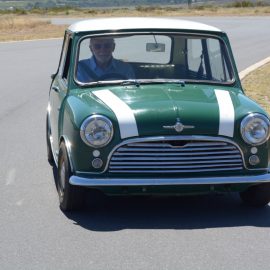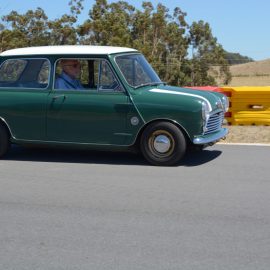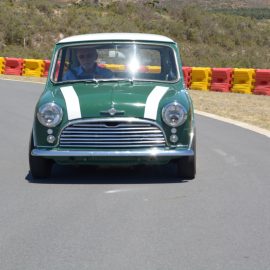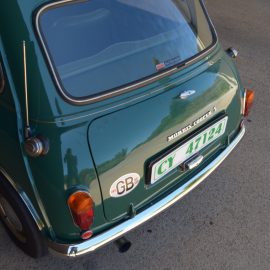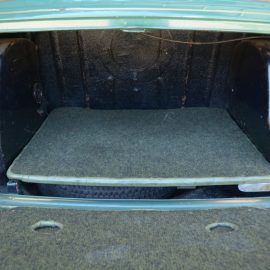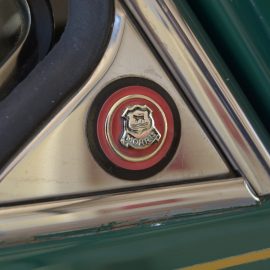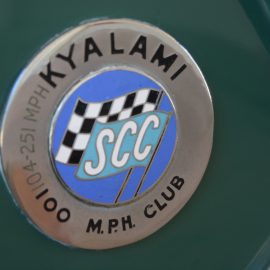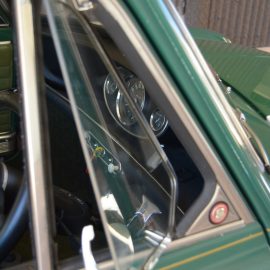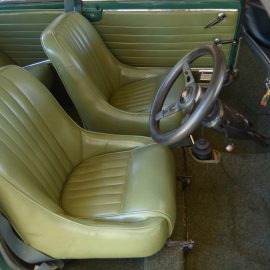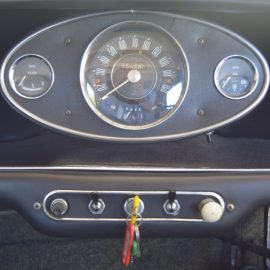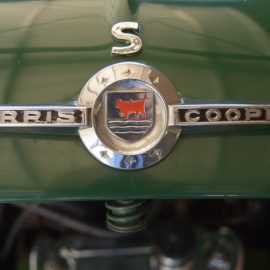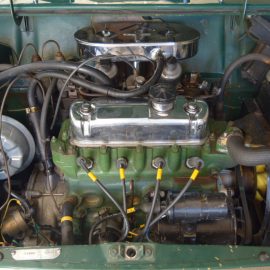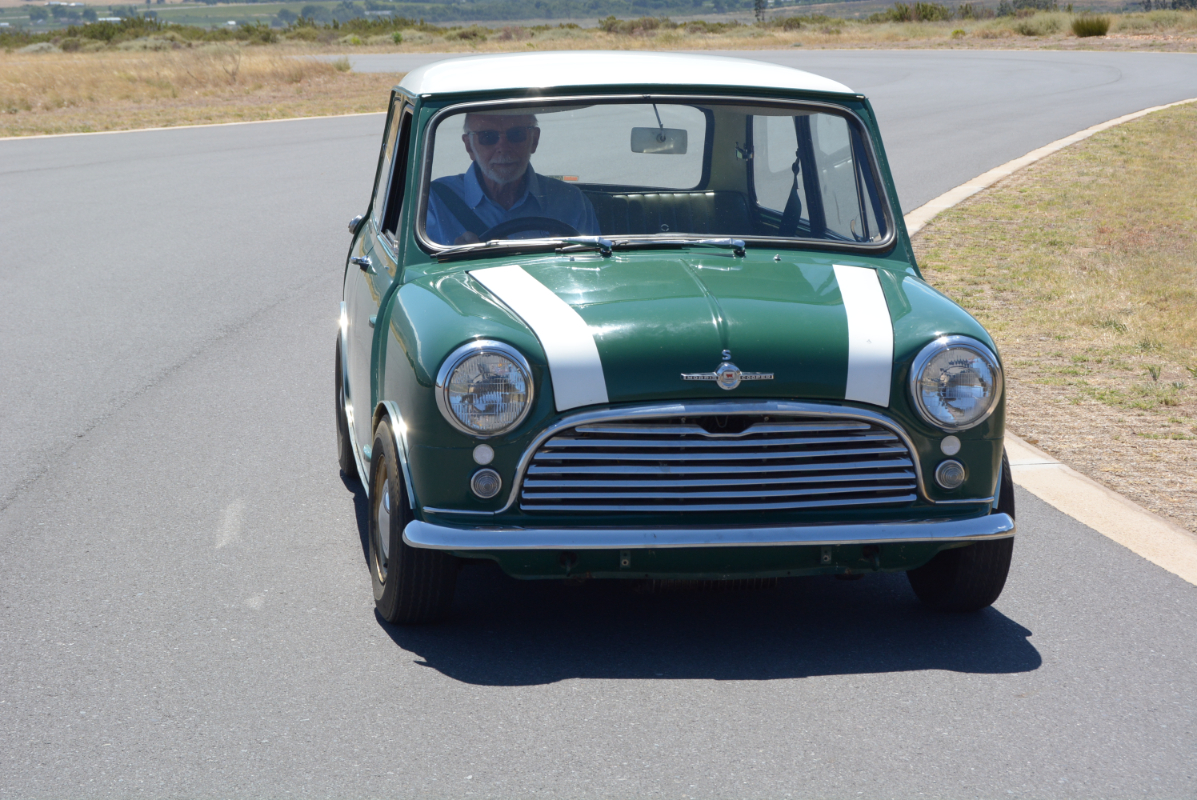
29 Sep Collection In Action: Morris Cooper S
In September 1961, the Austin Mini Cooper and Morris Mini Cooper made their debuts, initially with a 997cc version of the BMC A-series engine. A 998 followed, then came a 1071 Cooper S in 1963 followed by a 970 S and 1275 S in 1964. Sixty years on, we celebrate the start of the Cooper legend…
Without doubt, the original Mini ranks as one of the world’s most influential cars. When it appeared in 1959, it not only made motoring affordable to so many, but in doing so set some trends that invigorated an industry that had only just got back on its feet after the war years. Front-wheel drive with the gearbox mounted underneath the engine, Hydrolastic suspension, a minimalist and spacious interior with a centre-mounted speedo – the Mini was innovative and compact and cute, and destined to become an automotive icon. And, as with many groundbreaking designs, it did not take long for there to be a desire to make it go faster, a tendency that did not go unnoticed by one of Britain’s motor sport heroes, John Cooper.
John was co-founder, with his father Charles, of the Cooper Car Company and became an auto racing legend with his rear-engined chassis design that would eventually change the face of the sport at its highest levels, from Formula 1 to Indianapolis. As a friend of the Mini’s creator, Alec Issigonis, Cooper saw the car’s potential for competition but Issigonis was initially reluctant to see the Mini in the role of a performance car. So, Cooper appealed to the British Motor Corporation’s (BMC) management, and in 1961 an agreement was reached that led to the two men collaborating to create Cooper versions of both Austin and Morris versions of the Mini. (Austin and Morris badging was dropped in 1969 when Mini became a model line in its own right.)
Under the tiny bonnet, BMC’s transverse A-Series 848 cm3 in-line four was given a longer stroke to increase capacity to 997cc. The race-tuned engine featured twin SU carburettors, a close-ratio gearbox and front disc brakes, a rare feature at the time on such a small car. Right away, the Cooper Minis were winners and in 1962, Rhodesian John Love, driving Ken Tyrrell-run Morris and Austin versions of the Cooper, became the first non-British driver to win the British Saloon Car Championship after seven class wins in the eight rounds and setting lap records at four of the races. Incidentally, South African Tony Maggs was a team-mate, the pair also racing single-seater Formula Junior Coopers for Tyrrell.
The 997 Cooper appeared in South Africa in 1962 and was only available in Palm Green (which was close to British Racing Green) with a white roof and gold-painted wheels. The instrument panel boasted additional gauges for oil pressure and water temperature, and a remote gearshift was fitted. Once again, the car was a success from the off, and helped create a bit of SA motor sport history when East London service station manager Des Ally became the first Coloured person to participate in a national race meeting, winning the (standard production) Group N race at Port Elizabeth’s St. Albans circuit driving a 997 Cooper on 14 March 1964.
In 1963, the A-Series engine’s bore and stroke were altered to achieve a capacity of 998cc but the following year this, too, was replaced, this time by a 1071cc unit, which powered the second Cooper to carry the S suffix. Second? Well, yes, because in the UK there was a short production run of 970cc Cooper S models that preceded the 1071 but none of these came to SA, although some local tuning shops made copycat engines.
The 1071 Cooper S was launched here in July 1964 in both Austin and Morris guises and were assembled from Completely Knocked Down (CKD) packs – as opposed to being manufactured – at the BMC (later Leykor, then Leyland) plant in Blackheath, Cape Town. As a concession to Phase 1 of the industry’s local content programme that was introduced in 1961, these cars boasted unique, locally-made front bucket seats amongst a few other locally sourced items. The 1071 lasted just a year before the 1275 Cooper S appeared in July 1965.
Sadly, no records from the Blackheath plant have survived but, thankfully, one dedicated individual has, over the years, compiled his own records and written an excellent book entitled A South African Mini Story. Ryno Verster, SA’s ‘Mr Mini’ is the man we have to thank for compiling a detailed local history of these cars. With his considerable help, we have established that FMM’s car featured here – body number C-A2S7 892853, engine number 9F-SA-Y 42820 – confirms it is as being built in 1967 as a 1275 Cooper S with the ‘smiley’ grille and Morris bonnet, boot and steering wheel badging. In all other respects it was the same as an Austin version, and all were fitted with the famed SA bucket seats, wind-up front windows (referred to as ‘Australian windows’ introduced in January 1967) and twin fuel tanks, which were standard fare on all 1275s. Other indentifying items included the ‘wet’ Hydrolastic suspension and an oil cooler fitted horizontally behind the grille and in front of the distributor.
According to the UK Heritage records of CKD packs exported to South Africa, twelve 1275 CKD units were dispatched to Blackheath on 15 September 1966 with body numbers ranging from 892844 to 892855 – five Austins and seven Morris’. This car was actually listed as an Austin, so why it emerged as a Morris is a mystery. From Verster’s register of 42 Mk.1 1275 units, only five were numbered with the international body prefix code for Morris Cooper S 1275s, namely K-A2S4. All the rest carried the Austin C-A2S7 code. Of the total 264 Mk.1 units sent to South Africa, the UK Heritage records reflect 193 were Austins, and 71 Morris’. All a bit puzzling to say the least…
However, even though this car’s credentials are somewhat confusing, the bottom line is that it is a genuine 1275 Cooper S, and has a claim to fame. Sports Car Club of SA badging on the fenders is testimony to the fact that at some point this car achieved 104,251 mph (167,775 km/h) at a top speed day held at the old Kyalami circuit. Today, the car still has plenty of go and brings a smile to the faces of everyone who drives it. Although the gearshift is a bit clunky (early Mini remote shifts were renowned for being problematic), frequent cog swopping to keep the motor buzzing is not really necessary. The Mini’s legendary roadholding is so good that tackling bends requires only occasional lifting off the accelerator – the Mini’s inherent balance is superb. What came as a surprise is how relatively soft the ride is on the fluid-based Hydrolastic rubber-cone suspension that was invented by British rubber engineer Alex Moulton. Remember the Moulton bicycle of the ’60s?
This car benefits from the period modification of a lowered steering column angle, which complements the small but supportive seats to create a low-down driving position. For anyone long-legged like me, the stance is a bit ‘sit up and beg’, but it does not really matter. The S goes where you point it to the accompaniment of a surprisingly raucous exhaust note, and 54 years on is still a hoot to drive. The Mini was voted second (behind the Ford Model T) in last millennium’s Car of the Century voting, and Cooper and Cooper S derivatives were driven to competition successes around the world. Collectively they created a legacy that arguably is unequalled – a car for the people and a David amongst Goliaths in motor sport.




